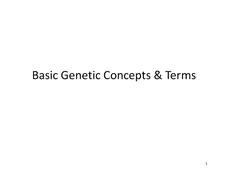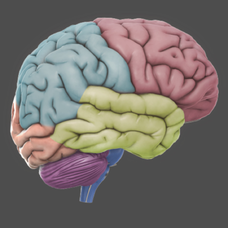Curated OER
Outbreak! Electrophoresis: Where the Bands Are
Students examine why pieces of DNA move at different rates and over different distances. In this DNA lesson students complete an activity.
Curated OER
The Living Environment
Ninth graders study the work of Alice Huang and complete activities on mutations. In this investigative lesson students complete several activities and discuss their findings at the end.
Curated OER
From Genomes of Species
Students investigate genomic research being done and its potential for understanding, treating, and possibly curing human genetic conditions. The potential of proteomic research as a companion to the work being done with genomics is...
Curated OER
Job Hiring...Who's the best candidate?
Students, working in teams, assume they are the newly hired research director of a biotech firm interviewing the top two candidates for the position of research scientist. They evaluate the candidates and decide who should be hired based...
Curated OER
Karyotype Puzzle
Young scholars identify chromosome pairs based upon band patterns and location of centromere. They order chromosome pairs based upon size. Students differentiate normal karyotypes from abnormal karyotypes. They correctly record karyotype...
Curated OER
Replication
In this replication learning exercise, students color in the nucleotide outline and the enzymes plus the base pairs to show the replication of DNA.
Curated OER
Using Amino Acid Sequences to Show Evolutionary Relationships
Junior biologists compare the amino acid sequences from fragments of five different globin molecules. They count the letter differences between each species pair. They construct a graphic representation of the evolutionary relationships...
US National Library of Medicine
Basic Genetic Concepts and Terms
Have you ever wondered why you aren't taller or invisible? It all comes down to your dominant and recessive genes. Introduce your class members to genetics with a presentation that includes worksheets for young geneticists to complete...
Curated OER
Nutrient Biochemistry
In this nutrient biochemistry instructional activity, students complete the blanks with information about nucleic acids and the process. Students also draw a figure referenced in the text given.
Curated OER
A Lab Trilogy for Beginning Biology Teachers
Learners are able to explain their models to other students and to their parents. Then learners like to decorate the room by hanging the models or constructing mobiles of a number of models.
Cold Spring Harbor Laboratory
3D Brain
Imagine being able to rotate the brain and view interior structures without dissection! This tool allows anatomy masters to do just that. They also learn about the associated functions, disorders, and symptoms of damage to each structure.
Curated OER
Gel Electrophoresis Simulation
Students identify the steps in a gel electrophoresis experiment and describe the role of enzymes. They examine the relationship between fragment size and migration rate in a gel. They view DNA fragments as well.
Curated OER
Polymerase Chain Reaction Activity
Young scholars explain the importance and function of enzymes. They compare and contrast the processes of DNA replication and polymerase chain reactions. They practice using new vocabulary as well.
Curated OER
Construction of a Hemoglobin Gene
Students see how eight pairs of triplets are equivalent to part of a gene and control a part of heredity. They comprehend how blood corpuscles manufacture normal hemoglobin. Students already comprehend that genes control the synthesis...
Curated OER
Sequencing the Cystic Fibrosis Gene: A Simulation
Ninth graders determine nucleotide sequences. They identify those base sequences that are normal, those that are normal variants and those that cause cystic fibrosis. Students use DNA nucleotide sequences to determine amino acid...
Curated OER
Lost Baby
Students simulate the steps involved in creating a DNA fingerprint by the RFLP technique. They analyze RFLP patterns to determine the parentage of a missing baby.
Curated OER
The Meaning of Genetic Variation
Students investigate variation in the beta globin gene by identifying base changes that do and do not alter function, and by using several Internet-based resources to consider the significance in different environments of the base...
Curated OER
CONSTRUCTION OF A HEMOGLOBIN GENE
Students use research to see how eight pairs of triplets are equivalent to part of a gene and control a part of heredity. They also understand how red blood corpuscles manufacture normal hemoglobin.
Curated OER
Antisense Oligonucleotide Therapy
Students conduct Internet research on Antisense Oligonucleotide Therapy. They design a puzzle to represent these processes, read and summarize an article, conduct research, and design a theoretical experimental procedure.
Curated OER
Why do we need Vitamin C in our diet? Or Why do we carry old inactive genes in our genome?
Students explore and explain how mutations in the DNA sequence of a gene may be silent or result in phenotypic change in an organism and in its offspring. They analyze how evolution and biodiversity are the result of genetic changes that...
Curated OER
Biology: Protein Study
Students in pairs, select and view proteins from the Protein Data Bank. After downloading the tutorial and instructions, they identify the protein's structures and primary biological functions. Then, students present their findings to...
Science Geek
Intermolecular Forces of Attraction
Chemists love London (dispersion forces)! Presentation begins with an explanation of intermolecular forces including hydrogen bonding, dipole-dipole attraction, and London dispersion forces. It also covers polarity and the relative...
Curated OER
Squirrel Islands
In this adaptations worksheet, students read about 3 species that have changed over time to adapt to their environment. Students design a squirrel that has adapted to an island habitat that students are assigned. They describe the...
Curated OER
Organic Chemistry
For this organic chemistry worksheet, students solve 20 problems including isomer structure, functional groups, types of reactions and the polymers that make up the structures of organic molecules.

























